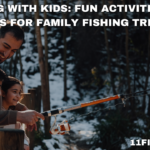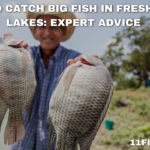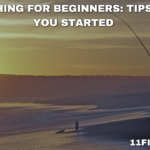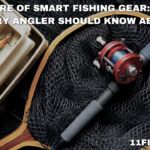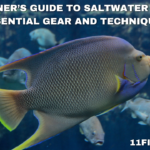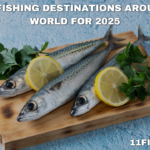Fly fishing is a popular pastime for anglers, often done from land, standing in water, or on larger boats. However, fly fishing from a canoe combines this relaxing activity with the mobility and accessibility of canoeing. While this approach offers unique advantages, it also presents certain challenges. Let’s explore both the pros and cons of this fishing method to help you decide if it’s the right fit for your next fishing trip.
Disadvantages of Fly Fishing From a Canoe
While fly fishing from a canoe can be an enjoyable and unique experience, beginners may face a few initial obstacles:
- Proximity to the Water
- Canoes are low to the waterline, making it challenging to manage your line while casting. Anglers accustomed to fly fishing while standing may find it tricky to adjust their technique.
- Stability Issues
- Reeling in a fish, especially a large one, can feel precarious in a canoe. Without proper balance, there’s a risk of tipping over. Stability improves with practice, but it can be daunting for first-timers.
- Disturbing the Water
- Canoes tend to move slightly with even minor body shifts, creating ripples that can startle fish. Maintaining motionlessness is crucial, requiring concentration and experience.
- Limited Gear Space
- Unlike larger boats, canoes offer limited storage. Carrying fishing gear, food, and safety equipment requires careful planning and organization.
- Wind Challenges
- Canoes are lightweight and susceptible to wind, which can make it harder to stay in one spot or cast your line accurately.

Advantages of Fly Fishing From a Canoe
Despite the challenges, there are significant benefits to fly fishing from a canoe, making it a rewarding experience for those willing to adapt:
- Access to Remote Locations
- Canoes can navigate shallow waters, narrow channels, and other areas inaccessible to larger boats. These untapped fishing spots often harbor less pressured, abundant fish populations.
- Increased Mobility
- Canoes allow you to cover a larger area quickly. Instead of being restricted to one location on land, you can paddle across lakes, rivers, or streams to follow fish activity.
- Silent Operation
- Without motors or propellers, canoes glide silently through the water. This quietness minimizes disturbance, making it ideal for stealthy fly fishing.
- Eco-Friendly Fishing
- Canoes have no environmental impact—no gas fumes, noise pollution, or mechanical disturbances to aquatic habitats. It’s a sustainable way to enjoy fishing.
- Cost-Effective
- Compared to motorboats, canoes are affordable, require no fuel, and are easy to maintain. This makes them an excellent choice for budget-conscious anglers.
- Adaptability
- Canoes are versatile and can be used on various water bodies, from calm lakes to slow-moving rivers. They’re lightweight, easy to transport, and simple to launch without the need for docks or ramps.
- Enhanced Experience
- The act of paddling a canoe adds a layer of adventure to your fishing trip. It connects you with nature, offering a more immersive and peaceful experience compared to motorized fishing.

Tips for Successful Fly Fishing From a Canoe
To make the most of your fly fishing adventure, consider these practical tips:
- Choose the Right Canoe
- Opt for a shorter, wider canoe, as it provides better stability and is easier to maneuver while fishing.
- Practice Balance
- Take time to practice staying stable in your canoe before venturing out with your fishing gear. Distribute weight evenly to avoid tipping.
- Minimize Movement
- Keep your movements slow and deliberate to avoid disturbing the water or alarming fish.
- Use Anchors or Drift Socks
- To stay in one spot, consider using a small anchor or drift sock to counter wind and water currents.
- Pack Light and Organized
- Bring only essential fishing gear, keeping it neatly arranged for easy access. Use waterproof storage bags to protect your belongings.
- Learn to Paddle Quietly
- Use slow, controlled strokes to glide through the water without splashing, preserving the serene environment and avoiding spooking fish.
- Be Weather-Aware
- Check weather conditions before heading out, as wind and rain can make canoe fishing challenging.
- Wear a Life Jacket
- Safety should always come first. Always wear a life jacket, especially when fishing in deep or unpredictable waters.
Why Fly Fishing From a Canoe is Worth Trying
Fly fishing from a canoe combines the joys of fishing with the serenity of paddling through calm waters. While there’s a learning curve, the rewards far outweigh the initial challenges. You’ll gain access to pristine fishing spots, enjoy the tranquility of nature, and improve your skills as an angler.
Whether you’re an experienced fisherman seeking new adventures or a beginner looking for a unique way to enjoy the outdoors, fly fishing from a canoe offers an unforgettable experience. Give it a try, and you might discover a new favorite way to fish!
